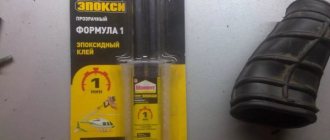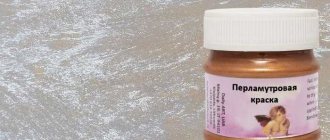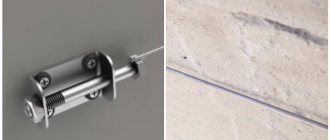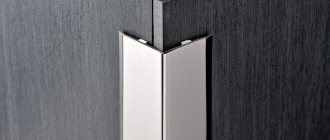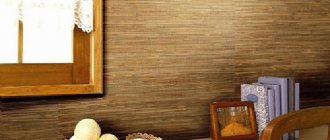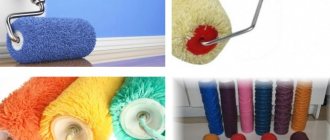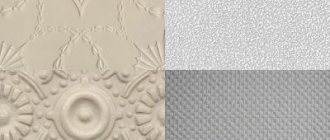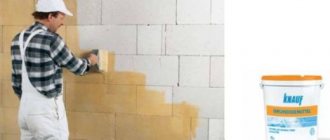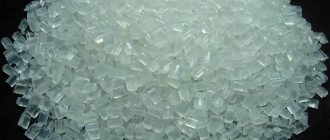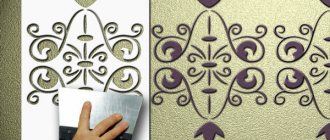Everything fresh on the topic of buying, selling, and selecting a car is located and updated on my blog. To go to the blog page, click on my nickname AVTOMAG48 or on my avatar
IMPORTANT: a thickness gauge will not protect you 100% from buying a damaged car, replacement body parts may have a paint layer close to the factory one, there are impacts on the lower part of the car (a car with low ground clearance drove into a curb, etc.), which disrupts the geometry of the body and triggers airbags, but body parts remain factory and in factory paint. The use of coating thickness gauges has become very popular when buying a car, and indeed this check is necessary (cars with numerous repainted parts should be cheaper, and cars that have been involved in an accident with damage to the power elements of the body should not be considered for purchase at all). In this article, I will tell you how to use a thickness gauge to check the paintwork of a car. The thickness gauge measures the distance from the device sensor to the metal, so we can determine the thickness of the car’s paintwork; if the part was painted or puttied (painting work was carried out), the paint layer will be thicker than the factory one. It is worth understanding that abandoning a living car because of several repainted parts due to a scratch is not always reasonable. A thickness gauge will help determine the repainted part; determine the reason for painting or replacing the body element; the presence of damage to the power elements of the body will not. To obtain reliable information about the car's accident history, it is necessary to have the body checked by an expert who has the necessary experience and knows where to look. If an expert is not nearby, then your task is to inspect as much as possible the problem areas (use a flashlight) that most often suffer in an accident (body repairs are most often visible - crooked sealant, makeshift welds, jams, uneven gaps, etc.). Problem areas: engine compartment, sills, side pillars (front, middle rear), spare tire niche, joints of the rear wings with the rear panel, etc., wherever you get you need to look. I use two thickness gauges in my work (hereinafter, for convenience, GREEN and BLACK). The thickness gauge displays the measurement result in microns (1000 microns = 1 millimeter). The GREEN thickness gauge works on magnetic and non-magnetic (aluminum body parts) metals, measuring up to a maximum of 1200 microns. The BLACK only works on magnetic metals, measures down to 5000 microns and has a remote sensor. If the paint layer is 2000 microns, GREEN will not show anything (and we can conclude that the paint layer is greater than 1200 microns), BLACK will show the paint thickness equal to 2000 microns (works up to 5000 microns). We install the GREEN thickness gauge and the BLACK sensor on a metal base (bare metal) and see the measurement result “0”, i.e. the distance to the metal is zero.
Next, we take a film 120 microns thick, place it on a metal base and take measurements, the results in the photo are “119” (black) and “121” (GREEN) - a small error is acceptable. The distance to the metal is 120 microns or 0.12 millimeters.
The factory paint layer on cars, depending on the brand, ranges from 90-160 microns. The difference between the maximum and minimum values of paintwork thickness usually does not exceed 30-40 microns. For example, the thickness of the factory paintwork on a Mazda 3 will have a reading of 80-100 microns, and the thickness of the paintwork on a Volkswagen Jetta will have a reading of 120-150. In case of repairing a scratch, the part is completely covered with varnish and the paint layer is increased by at least 50 microns, which is difficult not to notice when using a thickness gauge. Let's add another film 50 microns thick to the metal base (film 120 + film 50 = 170).
The measurement result is 172 microns. Also on a car, during painting work, the thickness of the paintwork increases; accordingly, using a thickness gauge, you can determine the paint layer and draw a conclusion about the repainting of the element. The thickness of the A4 sheet is 80 microns. This measurement is simply for clarity, so that you understand what thickness values we are talking about.
Below are the ranges of paintwork thickness in microns and their interpretation.
50 - 100 You need to know the factory paint layer of a given car model. If throughout the body the values are in the range (60-90 or 70-100) then everything is normal. If the minimum thickness of paintwork on a car body is 110 microns, then this part was replaced and painted with a layer thinner than the factory one. 100-160 You need to know the factory paint layer of a given car model. If the values throughout the body are in the range (110-140 or 120-160), then everything is normal. If the maximum thickness of the paintwork on the car body is 100 microns, then this part has been repainted, the paint layer is 50-60 microns thicker than the factory one. Probably the reason for the coloring is a minor cosmetic defect. 160-300 Color was produced. Not critical. There is no putty (or little). Repairing scratches, chips, minor wear. 300-500 Coloring was produced. The part was repaired (straightening, putty) or painted several times. If you repair the wear along the arch of the front wing with a slight deformation of the wing, then the paint layer in the place of wear (deformation) will be from 300 to 500, and on the rest of the wing 200 – 250 (not always so, numbers are for example). A paintwork thickness of 300-500 microns is not a reason to run away from the car, holding your head and saying “Broken bucket!” 500-1000 The part was painted and repaired. As long as painting technologies are followed and there is no deformation of the power structures of the body, there is nothing critical. 1000 microns = 1 millimeter. The paint layer is 700 microns, approximately 5 times thicker than the factory one and less than 1 mm. Over 1000 microns Repair and painting. The thicker the paintwork, the more putty was used during the repair. High probability of subsidence or cracks in the putty in the future, loss of presentation of the car. The car was probably restored after a serious accident; during restoration, they decided to save on body parts (they refused to replace them) and putty on the old ones. When replacing a part, the thickness of the paintwork can be any; the part installed to replace the defective one can be new or used. The new part is painted with a layer thinner than the factory one, equal to the factory one, or slightly thicker than the factory paint layer. When using used parts, the thickness of the paintwork will be greater than the factory one, with the exception of: 1 - a used part was installed in factory paint from the same car in the same color (a very rare occurrence), 2 - a used part is in perfect condition (no dents, etc.), it was cleaned to metal and painted (a very rare occurrence). In 95 percent of cases, using a thickness gauge, you will be able to independently determine whether a car part has been repainted or replaced. Let's finish with the theory and move on to checking the body of the Nissan Note. This is what the car looks like.
Types of thickness gauges
A thickness gauge is a special device that measures the thickness of the paint coating applied to body parts. There are several types of such devices. They differ in the principle of their action. The device can be:
- magnetic;
- ultrasonic;
- electromagnetic;
- eddy current
Magnetic thickness gauges have a rather primitive design. There is a small magnet in the body of the device, the force of attraction of which to the metal elements of the body varies depending on the thickness of the paintwork. The readings are transmitted to the arrow, the angle of deflection of which determines how much paint is applied to the car body in one place or another. The advantages of such devices include low cost, ease of use and the ability to work without batteries. The disadvantages are low accuracy of readings.
Electromagnetic thickness gauges are more expensive, but they are more accurate. The main disadvantage of such devices is that they can only be used to measure the parameters of paintwork on hardware. It is not possible to check the quality of painting of a part made of non-ferrous metal or plastic.
Eddy current instruments have excellent measurement accuracy. They cost more than electromagnetic ones. The main disadvantage is the dependence on the conductive properties of the material. For example, when taking measurements on aluminum or copper parts, they provide very accurate data, but on ordinary metal they work with errors.
Ultrasonic devices are the most accurate and versatile. They can be used when working with metal, plastic, composite and other materials. The only drawback of such devices is their high cost. They are usually used to check vehicle paintwork at branded service stations.
Depending on the operating principle and accuracy of the readings, the price of a thickness gauge can range from 2 to 30 thousand rubles. If you want to measure the thickness of paint on a car, but you don’t have enough money to buy a good car testing device, you can rent such a device. The rental price varies from 500 to 600 rubles. per day.
Instructions for using the thickness gauge
A paintwork thickness meter is a small device, powered by batteries or an accumulator, made in the form of a pistol, but there are other types. It refers to non-destructive testing devices, that is, diagnostics are carried out without damaging the car and its components.
Electromagnetic, ultrasonic, eddy current, laser and other meters are produced.
The method of obtaining data allows you to work with two or more types of materials.
Stages of working with the device
The entire cycle of working with a thickness gauge can be divided into several actions:
- Calibration;
- Measurement;
- Correlation of the results obtained with the basic indicators.
Before starting work, make sure that the thickness gauge is turned on. This can be understood by the display being turned on and the presence of indicators on it. After 20–30 seconds of inactivity, the device turns off to save battery.
After switching on, you need to adjust the thickness gauge. The setup procedure is described in the instructions.
New models of meters make it possible to work with two or more body materials.
Preparation
Before taking measurements, it is necessary to prepare the device itself and the coating being measured. The thickness gauge must be charged and calibrated. Before diagnostics, the surface of the part must be cleaned of dust, dirt and protective materials, such as film. When determining the thickness of the paint through the film, the devices will show a deviation by the value of the thickness of the protection. This value can be ignored if all elements of the car are also covered with film.
Examination
The kit comes with a set of plates that are used to adjust the thickness gauge. They look like small strips of metal painted with paint. The material of the plates corresponds to the metal or plastic that the thickness gauge is intended to work with.
Checking the operation looks like this:
- Release the calibration plates from the film;
- Turn on the device and lean the sensor against the plate;
- Press the “K” or “CAL” key;
- Using additional buttons, compare the indicator with the standard one, for example, 102 microns for plastic;
- Press the calibration button again.
If the adjustment is carried out correctly, the device will be ready to measure the material on which it was calibrated
Depending on the model, it can also be configured to interact with other materials.
How to check a car with a paintwork thickness gauge: instructions
To use a thickness gauge correctly, it is important to know that a new device must be calibrated. Even if the store seller swore that the device is completely ready for use, it is important to check the accuracy of its readings. For this purpose, so-called reference plates made of metal and plastic are used. Each of them is coated with a layer of paint of a certain thickness. If the instrument readings do not match the data indicated on the reference plate, the necessary changes are made to the settings. Next, we’ll look at how to use a car paint thickness gauge.
You can determine whether a car has been in an accident and how serious the accident was by checking the thickness of the paintwork on various body elements. Experts advise starting the check from the front fender and then moving along the perimeter of the car, carefully recording all indicators. To obtain the most accurate results, it is best to check each element three times, and then calculate the arithmetic mean.
When factory painted, the thickness of the paint coating varies from 90 to 160 microns (0.09-0.16 mm). This indicator may differ for different car models. For example, in the Volkswagen Jetta it is 0.12-0.15 mm, and in the Mazda 3 it is 0.08-0.1 mm. The permissible difference between the upper and lower values should not exceed 0.03-0.04 mm.
If, as a result of the inspection, it turns out that the paint layer on one or more body elements is more than required, most likely the car was in an accident and was repainted. Buying damaged cars should be done with caution. By the degree of deviation from the norm, one can judge how serious the damage to the body was. In particular:
- If, during inspection, the maximum value on any body element (fender, hood, etc.) is exceeded by 50 microns, there is no particular reason to worry: most likely, we are talking about repairing a small scratch (after restoration, the surface of the element is covered with varnish, which and increases the paint layer by 0.05 mm). You can safely buy such a damaged car;
- if the check indicates that the norm is exceeded by 300-500 microns, it’s time to think: perhaps the car was in a fairly serious accident, after which some body elements required straightening and putty;
- indicators exceeding the average value by 1000 or more microns indicate that the accident was very serious. Some parts needed replacing, but the seller decided to save money and apply a large layer of putty. In the future, this can lead to cracks in the paintwork and many other problems. It is better not to buy such damaged cars.
Checking a car with a thickness gauge is a slow process and requires attention. If you are not sure that you can properly check the car yourself, invite an experienced specialist. You need to understand that it is better to spend a relatively small amount of money and a couple of hours of your time checking the car before purchasing than to throw away several tens, or even hundreds of thousands of rubles.
A simpler and cheaper way to check a car for involvement in an accident is offered by Autocode. To find out the car history, just indicate the car number. Within 5 minutes, the system will display all the information about the car: number of owners, mileage, participation in accidents, calculation of insurance repairs , restrictions and fines, and much more. Check your car online in one click!
After learning the full history of the car, get to know its technical condition better. If you do not have the opportunity to personally attend the car inspection, or you doubt your knowledge, order an Autocode on-site inspection. The technician arrives as soon as possible and checks the car with a specialist. instruments and gives an accurate conclusion.
Hello, dear online audience of my autoblog! I’m with you again, Ilya Kulik, and in today’s article we will talk about how to use a car paint coating thickness gauge.
In the process of inspecting a car you buy second-hand for the presence of putty spots and repainting of a broken body, you will undoubtedly need a device such as a thickness gauge, which can easily reveal the discrepancy between the paint coating layer and its factory thickness.
But for effective measurements with correct readings, the motorist needs to be able to handle both the purchased thickness gauge itself and know the features of the process of examining a car with its help. Otherwise, due to incorrect readings, a conflict with the seller may arise and a profitable deal may be missed.
I want to attract your attention. In addition to the ability to handle the device, its correct choice also plays an important role. But if you buy not the most expensive, but simply the most optimal device in terms of price and quality - such as Em2271, then you will find yourself even more advantageous, having received what you need for a much lower cost. Check it out by following the link:
The budget thickness gauge All-Sun Em2271 is popular because it is affordable for anyone, while at the same time allowing you to make accurate measurements on ferrous and non-ferrous metals with their automatic detection at the level of expensive analogues without any settings. Why then overpay?
What kind of coating do different thickness gauges work on?
First of all, you must clearly understand what capabilities your device has - what it can measure and what it cannot. In one of the previous articles, I talked about the physical principles of operation of thickness gauges. It is on these principles that the ability of devices to measure the thickness of a coating on a particular material is based.
For example, if you have a device based on:
- Based on a purely electromagnetic principle, he can only measure coatings on ferromagnetic (iron-steel alloy) housings.
- Based on the electro-eddy current principle, it will measure well the thickness of coatings on diamagnetic materials (alloys of aluminum, copper, bronze, etc.), and on ferromagnetic materials it will work with slightly less accuracy.
- Using the combined electromagnetic eddy current principle, it will be possible to measure coatings on any metals.
- Based on the echolocation-ultrasonic principle, you can measure the thickness of anything, on anything, without the functioning of the device depending on the material of the case.
That is, all devices, except ultrasonic ones, require a metal base of the coating being measured to operate. Therefore, if you need to check newfangled cars with composite-plastic bodies for damage, then you need to rent a professional echolocation device.
What coatings do thickness gauges measure?
Unlike the body base, for household thickness gauges the coating to be measured can be made of almost any solid material. What could this be, for example?
- Different types of paint and varnish coating;
- All kinds of primers;
- Putty layers;
- Layers of rust;
- Plastic coverings;
- Ceramic and other layers on metal.
- The coating being measured must be dielectric;
- It should have a smooth outer surface.
That is, to be able to measure with instruments based on magnetism, and all household thickness gauges are exactly like this, you need to have a metal base and a smooth dielectric coating - most car bodies today meet these conditions, although in the future, perhaps, car bodies will be made primarily from non-metallic materials.
Of course, you also need to take into account the relationship between the type of your device and the properties of the body metal. However, this applies more to outdated devices - almost all modern thickness gauges can work on any metal base, including budget models like the All-Sun EM227.
What is a thickness gauge
The thickness of the paintwork (paint and varnish coating) is measured in microns (1,000 microns = 1 mm). To better understand these quantities, imagine a human hair. Its thickness is on average 40 microns, and the thickness of an A4 sheet is 80 microns.
Thickness gauge
The thickness gauge measures the distance from the metal to the device's sensor using electromagnetic or ultrasonic waves. The device determines the wavelength and shows the result on the display.
Thus, it is possible to determine repainted and puttied parts after repair, knowing the thickness of the paintwork of a particular model. On average, the value for modern cars is in the range of 90-160 microns. An error of 30-40 microns is allowed in different places of the body; the error of the device itself should also be taken into account.
Preparing for measurement
So, you know the properties of your thickness gauge and the properties of the body of the car you are interested in. You can begin to examine it, but first you need to make some preliminary preparations.
Device calibration
For the most accurate readings, it is recommended to calibrate the thickness gauge before the measurement session. This refers to those devices that support this operation (there are so-called self-calibrating models). The point of calibration is to manually indicate to the device the exact reading value using a reference measurement in a special mode.
What is needed for this? Calibrated thickness gauges are supplied with two, three or more calibration plates made of metal and plastic. The minimum that is needed for calibration is one metal plate (simulating the base of the body) and one plastic plate (simulating the paintwork of the body).
You can choose any metal plate (not necessarily from the factory kit). If the device works only on ferrous metals, then a steel ferromagnetic plate is needed, and if the device is universal, then it can additionally be calibrated using a diamagnetic aluminum plate. The main thing is that both plates have a smooth and clean surface.
But plastic calibrator plates are standards of thickness and it is better to use those included with the device. Typically this is one standard thickness of 102 microns. But sometimes several additional ones, with different thicknesses, are added to the main standard to double-check the calibration.
Calibration procedure
To carry out the calibration procedure, prepare the necessary plates (remove the protective film on new ones), turn on the device and reset the device to factory settings: usually for this you need to take a test measurement of the metal plate and press the “0” key, but this needs to be clarified in the instructions for your model .
For example, for the push button ET-111 you need to act in exactly this way, but the trigger ET-11S is reset to the initial settings when turned off, when the trigger and the “0” key are pressed simultaneously.
During this test measurement, the error level will be displayed on the screen. If this value is "0", then no calibration is required.
For any other indications, proceed according to the following points:
- Place a plastic standard on the metal plate and carefully measure the thickness.
- Press the “K” calibration mode key (“CAL” or something similar) on the instrument panel.
- Using two calibration keys (type > Do you know what the paint thickness of your car should be? - Paint thickness table
Your device is calibrated and ready for use. But first you need to familiarize yourself with the table, which shows the average limits of paintwork thickness for your car brand.
Here I have provided a table with basic values, but on the Internet you can find more detailed data on factory paint thicknesses. However, it is best to take these values not from tables, but from the technical documentation of the vehicle being examined.
Thickness is indicated in micrometers (μM).
You must remember that the range of factory paint thickness for most cars is 70-150 microns, and the most common values are even narrower - 80-130 microns.
But there are the following nuances:
- The factory thickness of the coating may vary on different body parts, which depends both on different technological application methods and on the physical properties of the paint. For example, in the middle of a car roof the thickness of the paintwork is usually less than at its edges.
- There may be a difference in values between different individual elements of the housing, but for symmetrical locations of paired elements it should be the same.
- Despite the permissible differences in the thickness of the factory paintwork on different elements, these values should not exceed 50 microns for the smallest and largest indicators. On average, this figure should be 20-35 microns (without taking into account the 2-4% permissible error of the thickness gauge, take this into account).
- You should also know that the factory thickness of the paintwork on the internal surfaces of the body is approximately 40-60 microns thinner than the external surfaces, keep this in mind.
Instrument calibration
The device must be calibrated before use. It's very easy to do. The device comes with reference plates made of metal and plastic. The device usually has a “cal” button. After pressing the button, you need to attach the thickness gauge sensor to the metal plate and reset it to “zero”. Then we put a plastic one on the metal plate and measure again. The thickness of the plastic plate is already written on it. For example, 120 microns. All that remains is to compare the results.
Thickness gauge calibration
Small deviations of a few microns are allowed, but this is within normal limits. If the device shows the correct value, then you can start measuring.
Measurement procedure
The direct measurement procedure is not particularly difficult - any driver can handle it.
Here you should take into account the differences in turning on devices for different models: trigger and some pressure devices of an outdated type must be turned on without touching the sensor to the surface being examined, while modern devices automatically turn on when the sensor comes into contact with something solid.
Attention! Do not point the switched-on sensor into a person’s eyes at close range!
Everything else is pretty simple:
- Press the turned-on thickness gauge against the surface being examined, and it will display the measured readings on the screen. In trigger models, to initiate measurement you need to press and release the trigger; in push models everything happens automatically. Keep in mind that the device must be held firmly and level so that the sensor comes into contact with the enamel without distortion.
- You can examine the surface pointwise or in continuous measurement mode: without releasing the trigger or simply continuing to move the pressure device along the paintwork in the desired areas - the readings will change.
- But to derive average thickness indicators for a car, point measurements are needed: each segment is examined separately.
- The elements are conventionally divided into 5 parts (4 in the corners and 1 in the middle). Of course, you can take more measurement points, especially if there are already some suspicions in a certain area.
- For each point, 3-5 measurements are taken, which are recorded on paper or a ready-made printed diagram of the car.
- Carry out each point measurement not in the same place, but in a radius of about 10-20 cm around the selected center - this will achieve greater average accuracy.
- After this, for each measurement, the arithmetic mean is calculated - the sum of the readings of all measurements of a point, divided by the number of measurements of this point (elementary school arithmetic).
- As a result, you will get 5 arithmetic average readings for each body element, by which you can judge the degree of discrepancy between the thickness and the factory parameters of local areas (roof, wings, doors, etc.).
- From these 5 indicators, you can easily calculate the arithmetic average of the thickness of the paintwork for each segment, and based on this, make a calculation for the entire machine.
And now the same thing, only more clearly:
How to use a thickness gauge first part:
What thickness values are considered a discrepancy with the factory ones?
It is not difficult to determine, using the thickness gauge readings, non-factory paint, much less puttying areas, if you know all the initial data.
The practice of examining used cars shows that usually in cases of repainting/touching up, the instrument values are 2 or 3 times higher than the standard factory ones.
In fact, we can say this: if there is a discrepancy of a hundred microns or more, then this is guaranteed not to be the original coating. Moreover, a discrepancy exceeding 160 microns indicates a putty layer.
An ordinary additional layer of paintwork adds approximately an extra 100 microns to the existing one. This means that if the overall reading is 180-260 microns, then this indicates overpainting/touching up. And if it’s higher, then it’s already painting with putty. The thickness of putty can sometimes have not micro, but macro values, which thickness gauges are not able to display on the screen due to being off scale.
How a car painter works so you don't notice anything
You also need to take into account the possibility of all sorts of tricks by auto body mechanics. For example, they can specifically reduce the factory thickness of the paintwork with abrasive polishes before painting. Because of this, in case of inept operation, the thickness gauge shows values less than the factory ones (for example, 80-90 microns from the original 110-120).
If you want to learn more details about working with a thickness gauge, then watch this video, where an experienced dealer reveals the features and secrets of such a process using the example of examining a popular model of a domestic car:
How to use a paint thickness gauge
In some cases, before directly measuring the thickness of the paintwork, it is necessary to correctly calibrate the device. To do this, you should use special calibration plates, one of which plays the role of a metal base, and the others imitate layers of paint of various thicknesses. They are used to determine the accuracy of the device change. However, not all models require such adjustment - self-calibrating models can also be found on sale.
Next, you need to decide what thickness of paint for your car should be considered normal? After all, each manufacturer can use different color intensity for each model. You can find such information in the technical documentation for your car. On average, a layer of factory paint has a thickness of 70 to 150 microns.
However, a number of nuances need to be taken into account:
- In different areas of the body, the thickness of the paint layer may be different, which is due to technological features. In particular, a thicker layer is usually applied along the edges of the body.
- On the front and rear wings, the basic thickness of the paintwork may be different, but on symmetrically located elements it is always the same by default.
- The range of factory values for the thickness of the paint layer on different parts should not differ by more than 50 microns.
- The internal surfaces of body parts are covered with thinner layers of paint, the difference here is about 40-60 microns.
In order to change the thickness of the paintwork, press the working plate of the device evenly and firmly against the surface of the part being examined and, if necessary, press the start button (many modern models automatically turn on when in contact with the element being examined). Literally immediately, the thickness gauge will display data on the thickness of the paint coating at a given point.
For greater accuracy and reliability of measurements, divide the part of the body under study into 5 parts - 4 corners and a center. For each such point, take 3-5 measurements, recording the results in writing - this will minimize the error. Moreover, measurements need to be repeated not exactly at the selected location, but at some distance from it. For example, take measurements within a radius of 15-20 cm, so the objectivity of the results obtained will be much higher.
If strong deviations from the norms or a large range of measurements are identified in some area, then such an element can be examined more carefully. Take measurements not at 5, but at 8-10 different points, this will allow you to accurately determine the relief of the metal and the change in the thickness of the paintwork.
When all the necessary measurements have been completed, you need to determine the arithmetic average values for each part. Then, if necessary, you can calculate the average value for the entire machine.
Useful tips
- Sometimes sellers resort to such a trick: they deliberately do not wash a dirty car in order to make it difficult to examine it with the device.
- You should know that some premium models (Mercedes and some others) have a factory paintwork thickness that is higher than usual and reaches 150-250 microns. In this case, you need to look at the documentation for the car.
- Keep in mind that for older cars, even if for some reason they still have the factory paintwork, body elements located horizontally may have a significantly low thickness, because when washing these places rub more strongly and the paint on them It becomes thinner over time, especially among those who like to keep their cars clean, which in itself is commendable, of course.
